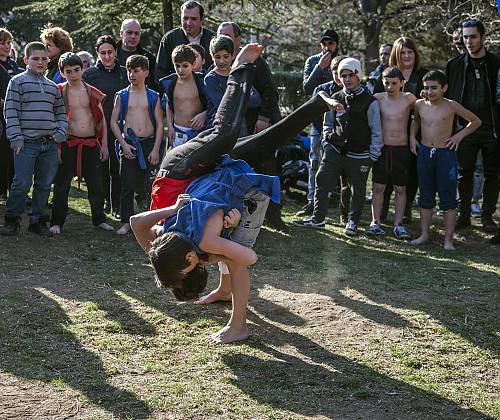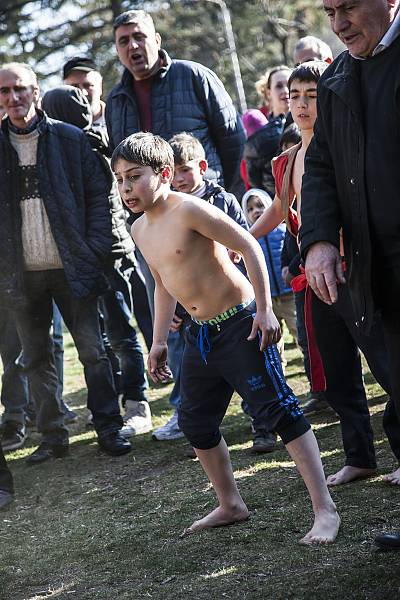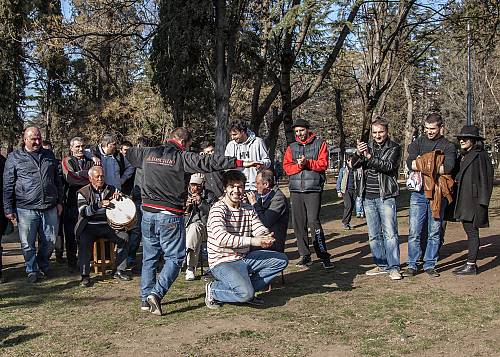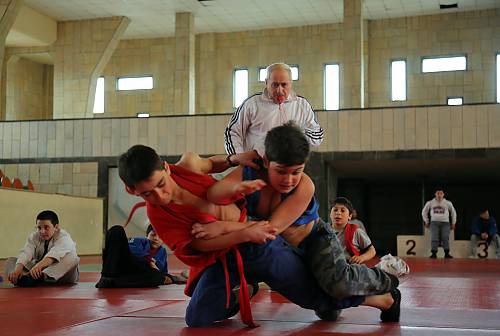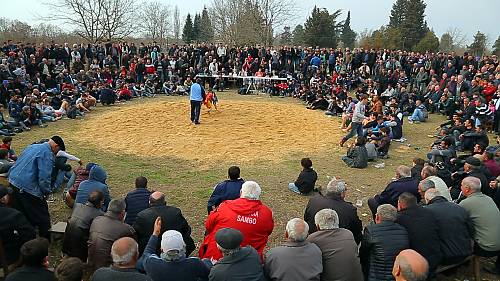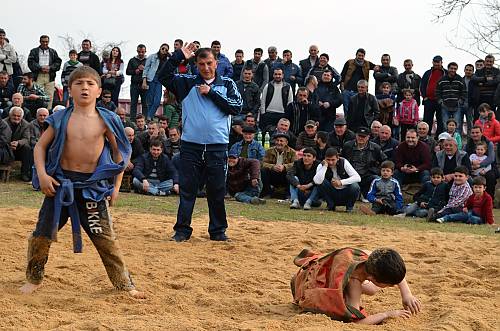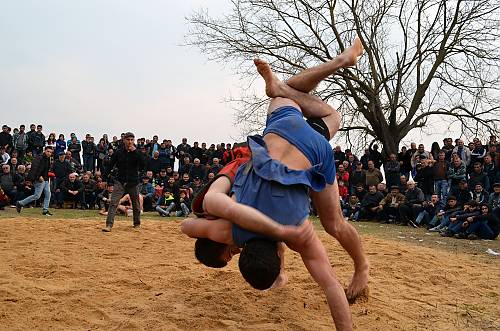Chidaoba, wrestling in Georgia
Inscribed in 2018 (13.COM) on the Representative List of the Intangible Cultural Heritage of Humanity

Chidaoba (wrestling) is an ancient form of martial art practised by a large proportion of the male population throughout all the regions, villages and communities of Georgia. Bearers of the tradition include young people, city residents, sports clubs, educational institutions and amateur organizations. The practice is a complex phenomenon that combines elements of wrestling, music, dance and special garments (‘chokha’). Having had a combat function until the late Middle Ages, Chidaoba gradually became a spectacular sport. Tournaments take place in an open-air arena, surrounded by a large audience, accompanied by a wind instrument (‘zurna’) and Georgian drum (‘doli’) music, which marks the beginning. Wrestlers attempt to defeat each other through special holds, and vibrant music enhances the dynamics of the contest. The code of conduct is chivalric, and occasionally the wrestlers leave the arena with a Georgian folk dance. Chidaoba uses an important number of special wrestling holds: there are an estimated 200 such holds and counter-holds, the combination of which speaks to the wrestlers’ creativity. The practice encourages a healthy lifestyle and plays an important role in intercultural dialogue. From early spring to autumn, young people practise wrestling outdoors, mastering skills previously acquired by watching matches, and there are wrestling sections in almost every village and city of Georgia.

